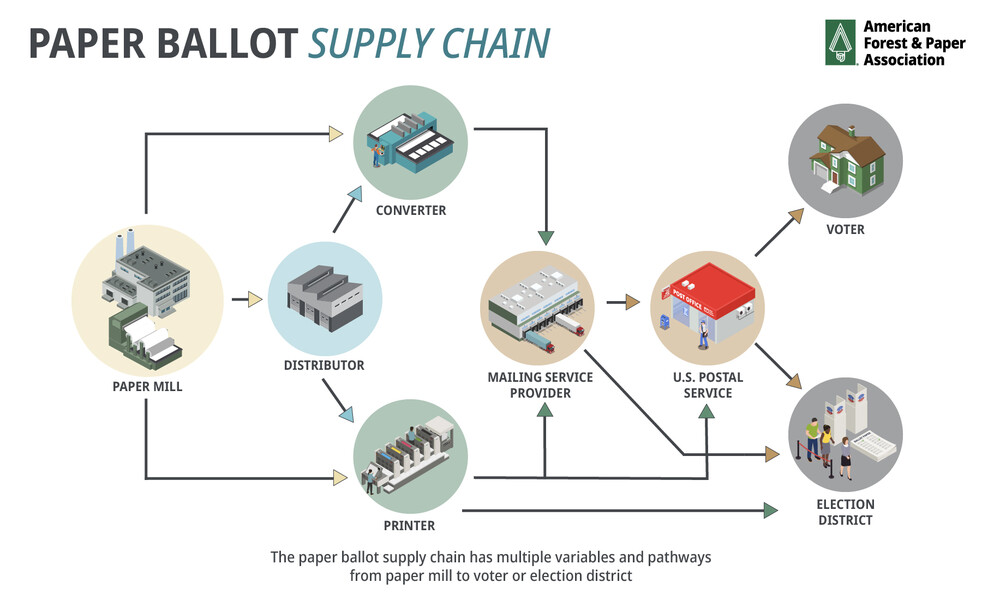Understanding Paper Ballots
The Role of Paper Ballots, Their Security and How They're Made
Key Takeaways
Paper is an important part of the American election process. Paper ballots help provide reliability and security. Paper ballots are made from specialty graphic paper based on detailed specifications from election officials and equipment manufacturers.
How Does Paper Support Elections?
Paper is an important part of the American election process. The paper industry is proud to make paper ballots and other election materials, including:
- “I Voted” stickers
- Ballot envelopes
- Voter registration forms
- Instruction materials
Paper ballots help provide reliability and security. According to Verified Voting, in 2024, 95% of voters are expected to use a ballot with a verifiable paper trail.
Is a Specific Kind of Paper Used for Paper Ballots?
Yes, paper ballots are made based on specifications from election officials and equipment manufacturers. This ensures ballot scanners and ballot marking devices correctly process the ballots.
Election officials cannot use any kind of paper to print paper ballots. The type of paper they use is based on the type of ballot tabulator.
How Are Paper Ballots Made?
Paper ballots are made from specialty graphic paper. U.S. paper mills manufacture specialty graphic paper year-round.
Paper ballots need to meet certain specifications for ballot tabulators to process them correctly. The specifications can include:
- Weight - yes, paper has different weights!
- Brightness
- Opacity, or how see through the paper is
- Caliper, which means the thickness
- Smoothness
Once a paper mill receives an order, the paper is produced to the specifications required. Then, there are multiple paths the paper can take before it ends up at a voting location:
- The paper mill can send the paper directly to a converter or a printer.
- The paper can go to a distributor first and the distributor sends it to a converter or a printer.
Paper converters take unprinted paper and turn it into the finished ballot sizes. Printers print the ink on a ballot.
Once the ballots are printed, they are shipped to the election district or assembled with other election materials by election service providers that manage the voting process workflow. Election officials work with paper suppliers and place orders for paper ballots months in advance.
Other election materials like ballot envelopes and instructions can be printed on different paper weights and types.

Are Paper Ballots Secure?
Paper ballots are a tangible and trusted option. They provide a paper backup that can be counted again, which enhances the security of our election system.
Paper ballots are essential and play a pivotal role in free, fair and secure elections.
